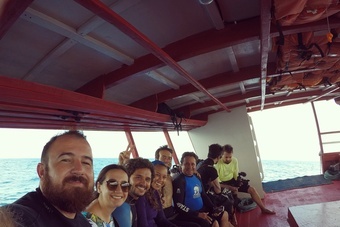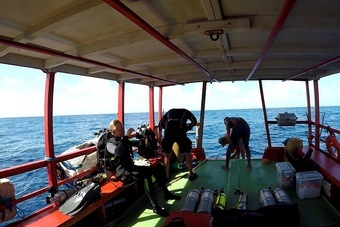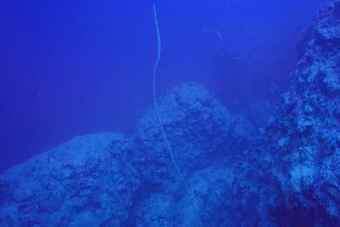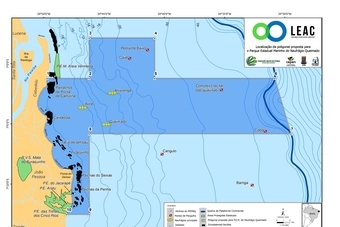Publications:
Morais and Santos 2018
The deep reef refuge hypothesis (DRRH) predicts that deep coral reefs may act as refuges against major disturbances affecting shallow reefs, but to date, a few studies have explicitly examined its validity at the community level. We sampled 19 Brazilian reefs distributed between 3 and 61 m depth and tested five DRRH predictions regarding species diversity, distribution, and functional profile of communities. The first prediction was that deep reefs (>30 m depth) should host greater gamma diversity to be able to export species to shallow reefs (<30 m). Second, depth‐generalist species should dominate the shallow reefs; otherwise, local extirpation in shallow areas could not be reverted by the deep reefs. Third, alpha diversity should be greater in deep reefs due to reduced anthropogenic pressure in deeper areas. Fourth, beta diversity should be smaller among shallow than deep reefs due to the human‐induced spread of a few disturbance‐adapted species near sea surface. Finally, the functional composition of shallow reefs should be a subset from that of deep reefs to allow functional recovering of shallower areas. Contrary to expectations, coral communities presented twice more gamma diversity in shallow than deep reefs (13 vs. seven effective species) and only three out of 17 species occurred along the entire gradient. Additionally, the alpha diversity of rare, typical, and dominant species was similar between shallow and deep reefs, and the beta diversity of rare and typical species was about 50% greater in shallow than deep reefs. Supporting the DRRH, coral communities of both reefs were dominated by reef‐building, zooxanthellated, gonochoric corals with brooding or broadcast reproductive mode (Siderastrea stellata and Montastraea cavernosa). However, soft corals were observed only in shallow reefs and azooxanthellated corals were recorded only in deep reefs. These findings revealed a limited potential of deep reefs to serve as refuges for Southwestern Atlantic coral communities, though they may work for two depth‐generalist dominant species. We strongly recommend preventing human disturbances at any depth and including both shallow and deep reefs in regional conservation actions.
3- 61 m
Mesophotic “mentions”
56 x (total of 3446 words)
Classification
* Presents original data
* Focused on 'mesophotic' depth range
* Focused on 'mesophotic coral ecosystem'
Fields
Community structure
Focusgroups
Octocorallia (Soft Corals)
Overall benthic (groups)
Scleractinia (Hard Corals)
Locations
Brazil - Eastern Brazil
Platforms
Surface-deployed sensors and samplers
SCUBA (open-circuit or unspecified)






